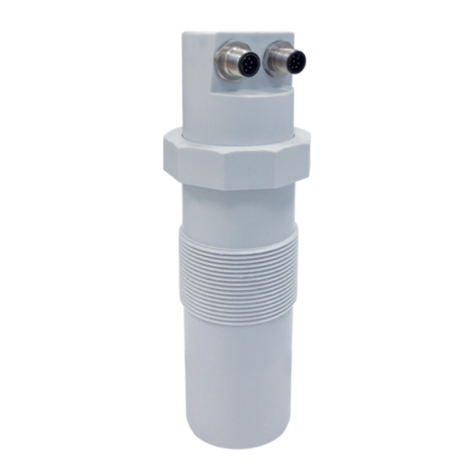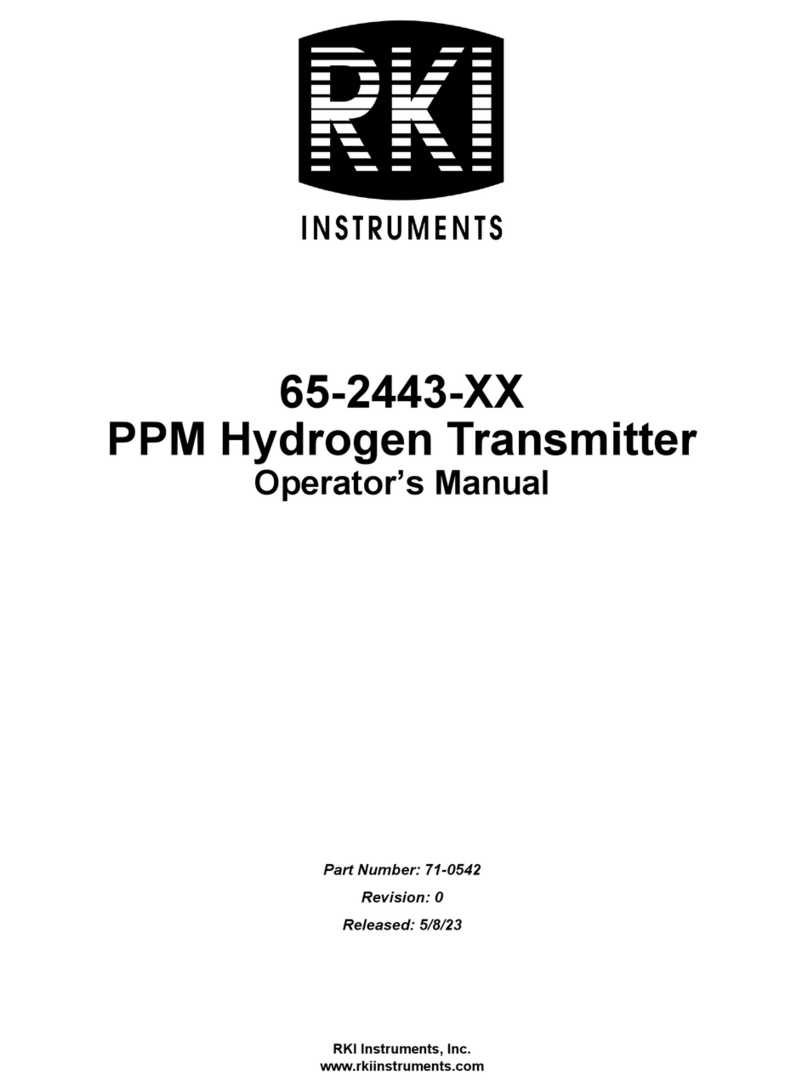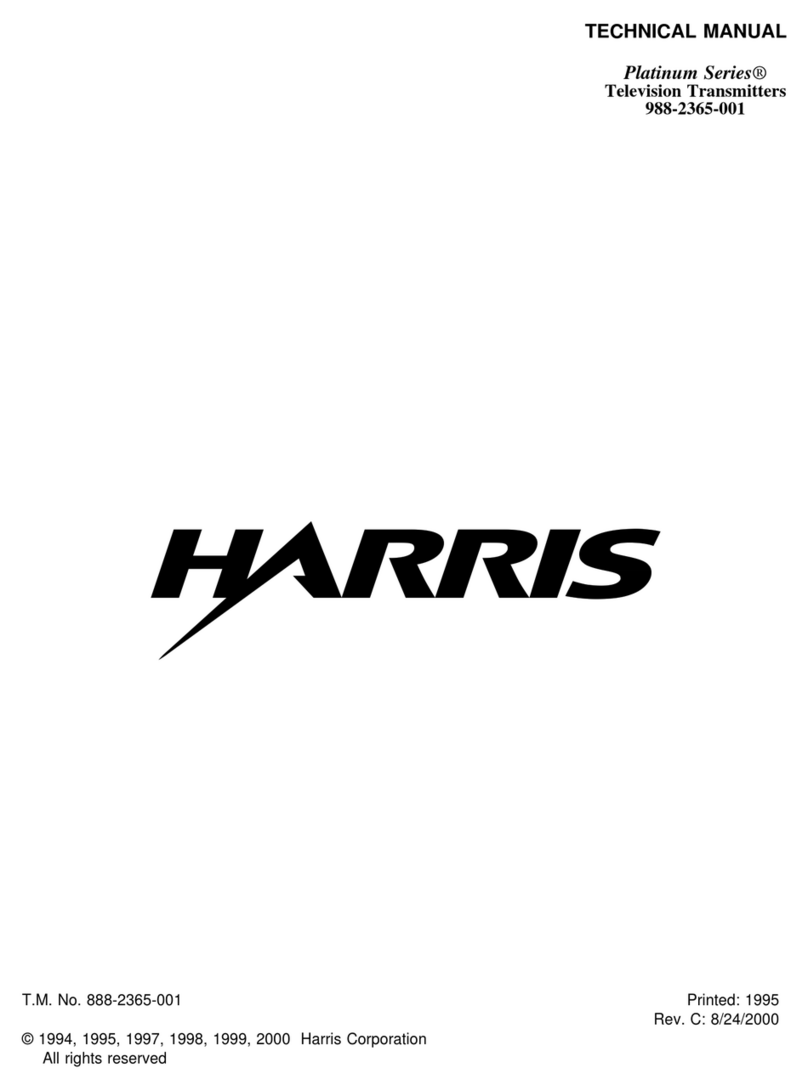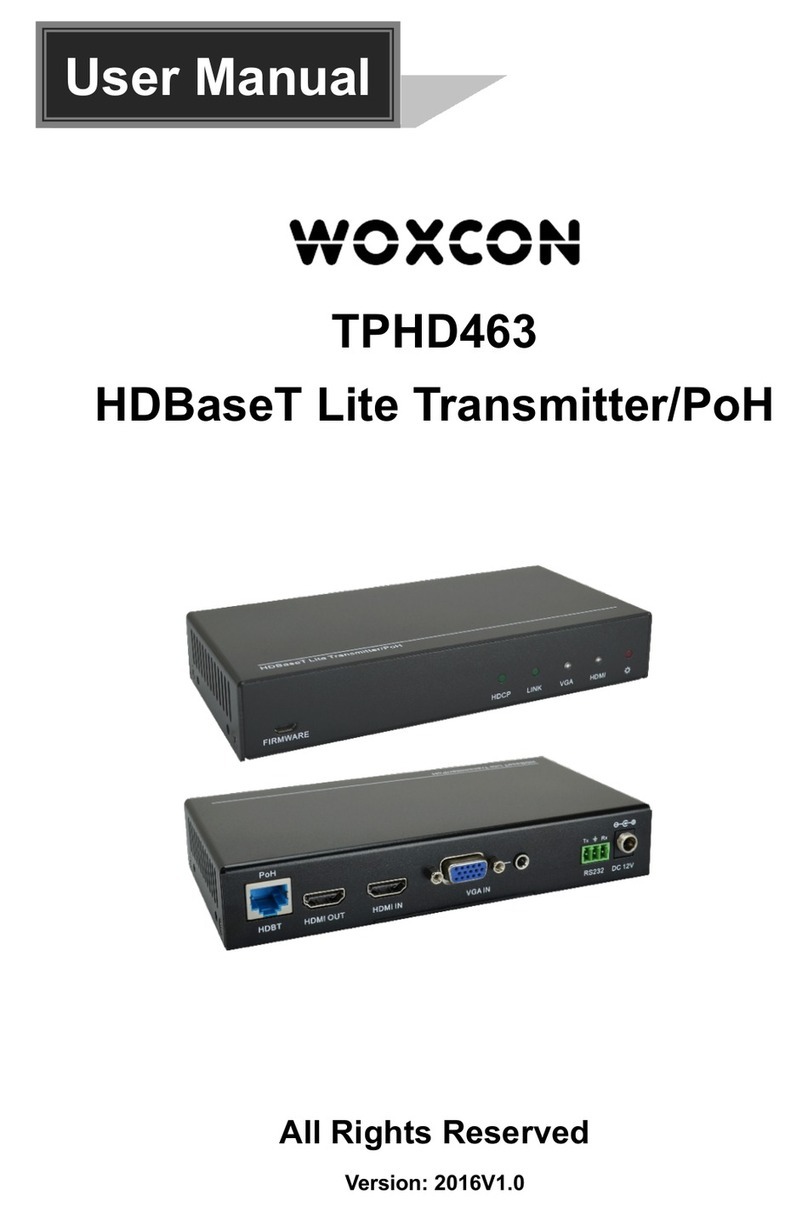Vertex Standard VX-420A Series User manual

SAFETY TRANING INFORMATION
VX-420A Series (LTR)
Operating Manual
CONTROLS & CONNECTORS (16 KEY)
Microphone
Speaker
MIC/SP Jack
(External Mic/Earphone)
VOL/PWR Knob
System/Group Selector
Side 1 Switch
Push To Talk
(PTT)Switch
Antenna
LCD
16 KEY
Battery Pack Latch
OPERATION
Preliminary Steps
ÌInstall a charged battery pack onto the transceiver, as described
previously.
ÌScrew the supplied antenna onto the Antenna jack. Never attempt
to operate this transceiver without an antenna connected.
ÌIf you have a Speaker/Microphone, we recommend that it not be
connected until you are familiar with the basic operation of the
VX-420A Series (LTR).
Operation Quick Start
ÌTurn the top panel’s VOL/PWR knob
clockwise to turn on the radio on.
ÌTurn the top panel’s System/Group se-
lector knob to choose the desired oper-
ating channel.
ÌRotate the VOL/PWR knob to set the vol-
ume level. If no signal is present, press
and hold in the Programmable key as-
signed to “NSQL”for more than one sec-
ond; background noise will now be heard,
and you may use this to set the VOL/
PWR knob for the desired audio level.
ÌPress and hold in the Programmable
key assigned to “NSQL”for more than
one second (or press the NSQL key
twice) to quiet the noise and resume nor-
mal (quiet) monitoring.
ÌTo transmit, monitor the channel and make sure it is clear.
THIS IS AN FCC REQUIREMENT!
ÌTo transmit, press and hold in the PTT
switch. Speak into the microphone area
of the front panel grille (lower left-hand
corner) in a normal voice level. To re-
turn to the Receive mode, release the
PTT switch.
ÌIf a Speaker/Microphone is available, remove the plastic cap and
its two mounting screws from the right side of the transceiver, then
insert the plug from the Speaker/Microphone into the MIC/SP jack;
secure the plug using the screws supplied with the Speaker/Micro-
phone. Hold the speaker grille up next to your ear while receiving.
To transmit, press the PTT switch on the Speaker/Microphone, just
as you would on the main transceiver’s body.
Note:Save the original plastic cap and its mounting screws. They
should be re-installed when not using the Speaker/Microphone.
Trunking System
ÌPress the PTT switch.
ÌWhen a channel is available, the TX/BUSY indicator will glow
red. The radio is now transmitting. While holding the PTT switch,
speak into the microphone area of the front panel grille (lower left-
hand corner) in a normal voice level.
ÌIf all channels are busy, a continuous tone will be heard from the
speaker, and the “BUSY” notation will appear on the display when
the PTT switch is pressed. Release the PTT switch.
ÌIf the radio is out of range during the transmitting attempt, slow
beeps will be heard followed by a continuous tone from the speaker.
BEFORE YOU BEGIN
Battery Pack Installation and Removal
ÌTo install the battery, hold the transceiver with your left hand, so
your palm is over the speaker and your thumb is on the top of the
belt clip. Insert the battery pack into the battery compartment on
the back of the radio while tilting the Belt Clip outward, then close
the Battery Pack Latch until it locks in place with a “Click.”
ÌTo remove the battery, turn the radio off and remove any protective
cases. Open the Battery Pack latch on the bottom of the radio, then
slide the battery downward and out from the radio while holding
the Belt Clip.
Caution!
Do not attempt to open any of the rechargeable Ni-Cd packs, as
they could explode if accidentally short-circuited.
Low Battery Indication
ÌAs the battery discharges during use, the voltage gradually becomes
lower. When the battery voltage becomes to low, substitute a freshly
charged battery and recharge the depleted pack. The TX/BUSY in-
dicator on the top of the radio will blink red when the battery volt-
age is low.
ÌAvoid recharging Ni-Cd batteries often with little use between
charges, as this can degrade the charge capacity. We recommend
that you carry an extra, fully-charged pack with you so the opera-
tional battery may be used until depletion (this “deep cycling” tech-
nique promotes better long-term battery capacity).
Side 2 Switch
This Radio has been tested and complies with the Federal Communi-
cations Commission (FCC) RF exposure limits for Occupational Use/
Controlled exposure environment. In addition, it complies with the
following Standards and Guidelines:
ÌFCC 96-326, Guidelines for Evaluating the Environmental Effects
of Radio-Frequency Radiation.
ÌFCC OET Bulletin 65 Edition 97-01 (1997) Supplement C, Evalu-
ating Compliance with FCC Guidelines for Human Exposure to
Radio Frequency Electromagnetic Fields.
ÌANSI/IEEE C95.1-1992, IEEE Standard for Safety Levels with
Respect to Human Exposure to Radio Frequency Electromagnetic
Fields, 3kHz to 300 GHz.
ÌANSI/IEEE C95.3-1992, IEEE Recommended Practice for the Mea-
surement of Potentially Hazardous Electromagnetic Fields-RF and
Microwave.
WARNING:This radio generates RF electromagnetic energy
during transmit mode. This radio is designed for and classified
as Occupational Use Only, meaning it must be used only during the
course of employment by individuals aware of the hazards, and the
ways to minimize such hazards. This radio is not intended for use by
the General Population in an uncontrolled environment.
CAUTION:To ensure that your expose to RF electromagnetic
energy is within the FCC allowable limits for occupational use,
always adhere to the following guidelines:
HThis radio is NOT approved for use by the general population
in an uncontrolled environment. This radio is restricted to oc-
cupational use, work related operations only where the radio
operator must have the knowledge to control its RF exposure
conditions.
HWhen transmitting, hold the radio in a vertical position with
its microphone 1 to 2 inches (2.5 to 5 cm) away from your mouth
and keep the antenna at least 1 inch (2.5cm) away from your
head and body.
HThe radio must be used with a maximum operating duty cycle
not exceeding 50 %, in typical Push-to-Talk (PTT) configura-
tions. DO NOT transmit for more than 50 % of total radio use
time (50 % duty cycle). Transmitting more than 50 % of the
time can cause FCC RF exposure compliance requirements to
be exceeded.
The radio is transmitting when the red LED on the top of the
radio is illuminated. You can cause the radio to transmit by
pressing the PTT button or by using the VOX headset, model
VC-25.
HDO NOT transmit when the radio is used in Body Worn con-
figuration with the following accessory: belt-clip.
It must be used ONLY for (1) there is a 4 cm distance from the
body during transmitting, (2) monitoring purposes, using the
speaker only and (3) for carrying purposes.
HAlways use Vertex Standard authorized accessories.
The information listed above provides the user with the information
needed to make him or her aware of RF exposure, and what to do to
assure that this radio operates with the FCC RF exposure limits of this
radio.
Electromagnetic Interference/Compatibility
During transmissions, this radio generates RF energy that can pos-
sibly cause interference with other devices or systems. To avoid
such interference, turn off the radio in areas where signs are posted
to do so.
Do not operate the transmitter in areas that are sensitive to elec-
tromagnetic radiation such as hospitals, health care facilities, air-
craft, and blasting sites.
FCC LICENSE INFORMATION
This radio operates on communications frequencies which are sub-
ject to FCC (Federal Communications Commission) Rules and
Regulations. FCC Rules require that all operators using Private
Land Mobile radio frequencies obtain a radio license before oper-
ating their equipment.
Tilt the Belt Clip
Insert the Battery Pack
Close the Battery Pack Latch
DISPLAY ICONS & INDICATORS
Battery Indicator
Receiver MonitorLow Transmit Power Mode
“ON”
“Call” indicator
RSSI Indicator (four steps)
8 Character Alpha-numeric Display
“Encryption” is activated
“Scan” is activated
This device complies with Part 15 of the FCC rules. Operation is
subject to the condition that this device does not cause harmful
interference.
Notice !
There are no owner-serviceable parts inside the transceiver. All
service jobs must be referred to an authorized VERTEX STAN-
DARD Service Representative. Consult your Authorized VER-
TEX STANDARD Dealer for installation of optional accessories.
Home System/Group is selected
LED INDICATOR
Glows Green
Blinking Green
Glows Red
Blinking Red
Yellow
LTR
System Busy
---
Transmitting
Battery Voltage is low
Receiving a Selective Call
CONVENTIONAL
Monitor on
Busy Channel (or SQL off)
Transmitting
Battery Voltage is low
Receiving a Selective Call
Microphone
Speaker
MIC/SP Jack
(External Mic/Earphone)
VOL/PWR Knob
System/Group Selector
Side 1 Switch
Push To Talk
(PTT)Switch
Antenna
LCD 4 KEY
Battery Pack Latch
Side 2 Switch
LED INDICATOR
Glows Green
Blinking Green
Glows Red
Blinking Red
Yellow
LTR
System Busy
---
Transmitting
Battery Voltage is low
Receiving a Selective Call
CONVENTIONAL
Monitor on
Busy Channel (or SQL off)
Transmitting
Battery Voltage is low
Receiving a Selective Call
CONTROLS & CONNECTORS (4 KEY)
EC071U103

Note that your dealer may have made provision for “Talk Around”
channels by programming “repeater” and “Talk Around” frequencies
on two adjacent channels. If so, the key may be used for one of the
other Pre-Programmed Functions.
Scan A/D
The Add/Del feature allows the user to arrange a custom Scan.
Press (or Press and hold) the assigned Programmable key to delete/
restore the current channel to/from your scanning list.
When you delete a stored channel, the “ ” icon will, in turn disap-
pear. When you restore a channel, the “ ” icon will now appear.
Phone
Your Dealer may have pre-programmed Auto-Dial telephone number
memories into your radio.
To dial a number, just press (or Press and hold) the Dealer-assigned
Programmable key for Speed Dialing. The DTMF tones sent dur-
ing the dialing sequence will be heard in the speaker.
Call/Reset
Press (or Press and hold) the assigned Programmable key to silence
the receiver and reset for another call (when your communication is
finished).
Call 1/Call 2
Press (or Press and hold) the assigned Programmable key to send a
5-tone sequential tone group which is pre-defined.
Call Up/Call Down
Press (or Press and hold) the assigned Programmable key to select a
5-tone encode code from the pre-defined encode list.
Code Set
Press (or Press and hold) the assigned Programmable key to change
the encode digits for 5-tone operation. To change a specific digit, se-
lect the desired digit using the [A]key, then change thenumber using
the [B]/[C]keys, and store the number using the [D]key.
Emergency
The VX-420A Series (LTR)includes an “Emergency” feature, which
may be useful, if you have someone monitoring on the same frequency
as your transceiver’s channel. For further details contact your VER-
TEX STANDARD dealer.
Home
Press (or Press and hold) the assigned Programmable key to recall
the pre-programmed Home system/group. When you recall the Home
system/group, the “H” icon will appear on the display.
Press (or Press and hold) the assigned Programmable key again to
return to previous system/group; the “H” icon will disappear on the
display.
Home Set
Press (or Press and hold) the assigned Programmable key to store
the current system/group to the Home register.
Short-cut GP-1, GP-2, GP-3, GP-4
Press (or Press and hold) the assigned Programmable key to recall
the Dealer pre-programmed System/Group directly.
Continuous System Up, Down
Press and hold the assigned Programmable key causes the radio to
begin stepping (repeatedly) upward or downward through the Sys-
tems.
Continuous Group Up, Down
Press and hold the assigned Programmable key causes the radio to
begin stepping (repeatedly) upward or downward through the Groups.
System Up, Down
Press (or Press and hold) the assigned Programmable key to switch
to a higher (or lower) System.
Once the desired System is reached, rotate the System/Group knob
to select the desired System/Group within the selected System.
Group Up, Down
Press (or Press and hold) the assigned Programmable key to switch
to a higher (or lower) operating Group number.
Monitor
Press (or Press and hold) the assigned Programmable key to disable
the Signaling Squelch (CTCSS, DCS, 5-Tone Signaling, or DTMF
Pager). Again press (or Press and hold) the assigned Programmable
key to resume normal (quiet) the Signaling Squelch action.
When the Signaling Squelch is disabled, the “ ” icon will be indi-
cated on the display.
NSQ
Press and hold the assigned Programmable key to disable both the
Noise and Signaling Squelch (CTCSS, DCS, 5-Tone Signaling, or DTMF
Pager) systems. Again press and hold the assigned Programmable
key to resume normal (quiet) operation of the Noise and Signaling
Squelch system.
When the Signaling Squelch is disabled, the “ ” icon will be indi-
cated on the display.
TX Low Power
Press (or Press and hold) the assigned Programmable key to set the
radio’s transmitter to the “Low Power” mode, thus extending battery
life. Press (or Press and hold) the assigned Programmable key again
to return to “High Power” operation when in difficult terrain.
When the radio’s transmitter is set to “Low Power” mode, the “L”
icon will be indicated on the display.
Key Lock
Press (or Press and hold) the assigned Programmable key to lock
the Programmable keys (except Lock, Emergency, Monitor, Light-
ing, and NSQ keys); thus, the [A], [B], [C], and [D]keys can be dis-
abled to prevent radio settings from being disturbed. In the Lock mode,
the display will show “LOCK” when you rotate the System/Group
selector knob or touch a Programmable key.
Lighting
Press (or Press and hold) the assigned Programmable key to illumi-
nate the LCD for five seconds.
Scan
The Scanning feature is used to monitor multiple channels programmed
into the transceiver. While scanning, the radio will check each channel
for the presence of a signal, and will stop on a channel if a signal is
present.
ÌTo activate scanning:
Press (or Press and hold) the assigned Programmable key.
The scanner will search the channels, looking for active ones; it
will pause each time it finds a channel on which someone is speak-
ing.
ÌTo stop scanning:
Press (or Press and hold) the assigned Programmable key.
Operation will revert to the channel to which the System/Group
knob is set.
Talk Around
Press (or Press and hold) the assigned Programmable key to acti-
vate the Talk Around feature when you are operating on duplex chan-
nel systems (separate receive and transmit frequencies, utilizing a “re-
peater” station). The Talk Around feature allows you to bypass the
repeater station and talk directly to a station that is nearby. This fea-
ture has no effect when you are operating on “Simplex” channels, where
the receive and transmit frequencies are already the same.
When the “TA” function is activated, the “TA ON” notation will be
appeared on the display.
DESCRIPTION OF OPERATING FUNCTIONSKEY FUNCTIONS
The VX-420A Series (LTR)provides programmable [A], [B], [C],
[D]function keys and programmable []and [ ] switches.
These Programmable keys functions can be customized (set to
other functions), via programming by your VERTEX STANDARD
dealer, to meet your communications/network requirements. Some fea-
tures may require the purchase and installation of optional internal
accessories. The possible Programmable key programming features
are illustrated below, and their functions are explained in the next chap-
ter. For further details, contact your VERTEX STANDARD dealer.
For future reference, check the box next to each function that has been
assigned to the Programmable key on your particular radio, and
keep it handy.
[A]
/
/
/
/
/
--/--
/
/
/
/
/
/
/
/
/
/
/
/
/
--/--
/
/
/
/
/
/
--/--
--/--
--/--
--/--
Function
System Up
System Down
Group Up
Group Down
Monitor
NSQ
TX Low Power
Key Lock
Lighting
Scan
Talkaround
Scan A/D
Phone
Call/Reset
Call 1
Call 2
Code Up
Code Down
Code Set
Emergency
Home
Home Set
Short-cut to GP 1
Short-cut to GP 2
Short-cut to GP 3
Short-cut to GP 4
Continuous System Up
Continuous System Down
Continuous Group Up
Continuous Group Down
[B]
/
/
/
/
/
--/--
/
/
/
/
/
/
/
/
/
/
/
/
/
--/--
/
/
/
/
/
/
--/--
--/--
--/--
--/--
[C]
/
/
/
/
/
--/--
/
/
/
/
/
/
/
/
/
/
/
/
/
--/--
/
/
/
/
/
/
--/--
--/--
--/--
--/--
[D]
/
/
/
/
/
--/--
/
/
/
/
/
/
/
/
/
/
/
/
/
--/--
/
/
/
/
/
/
--/--
--/--
--/--
--/--
[Side 1]
/
/
/
/
/
--/--
/
/
/
/
/
/
/
/
/
/
/
/
/
--/--
/
/
/
/
/
/
--/--
--/--
--/--
--/--
[Side 2]
/
/
/
/
/
--/--
/
/
/
/
/
/
/
/
/
/
/
/
/
--/--
/
/
/
/
/
/
--/--
--/--
--/--
--/--
Programmable key (Press/Press and Hold)
ARTS (AUTO RANGE TRANSPOND SYSTEM)
This system is designed to inform you when you and another ARTS-
equipped station are within communication range.
During ARTS operation, your radio automatically transmits for about
1 second every 25 or 55 seconds in an attempt to shake hands with the
other station.
If you have out of range for more than two minutes, your radio senses
that no signal has been receives, a ringing beeper will sound, and
“GROU OUT” will appear on the LCD. If you subsequently move
back into range, as soon as the other station transmits, your beeper
will sound and “GROU IN” will appear on the LCD.
DTMF PAGING SYSTEM (REQUIRES FVP-25 OPTIONAL BOARD)
This system allows paging and selective calling, using DTMF tone
sequences.
When your radio is paged by a station bearing a tone sequence which
matches yours, your radio’s squelch will open and the alert will sound.
The three-digit code of the station which paged you will be displayed
on your radio’s LCD.
ACCESSORIES & OPTIONS
FNB-V57 7.2 V 1100 mAh Ni-Cd Battery
FNB-V57IS Intrinsically-Safe 7.2 V 1100 mAh Ni-Cd Battery
FNB-V67LIA 7.4 V 2300 mAh Lithium-Ion Battery
FNB-83 7.2 V 1400 mAh Ni-MH Battery
FNB-V94 7.2 V 1800 mAh Ni-MH Battery
FBA-25A Alkaline Battery Case
VAC-10 Desktop Rapid Charger
(for
FNB-V57/-V57IS/-83/-V94
)
VAC-800 Desktop Rapid Charger (for
FNB-V57/-V57IS
)
VAC-810 Desktop Rapid Charger (for FNB-V67LIA)
VAC-6800 6-unit Multi Charger (for
FNB-V57/-V57IS
)
VAC-6810 6-unit Multi Charger (for
FNB-V67LIA
)
MH-45B4B Speaker/Microphone
MH-37A4B Earpiece Microphone
VC-25 VOX Headset
VCM-1 Mobile Mounting Bracket (for VAC-800/-810)
FVP-25 DTMF pager Unit
ATU-6D Rubber Antenna 450-490 MHz
ATV-6XL Untuned Antenna 134-174 MHz
ATV-8C Rubber Antenna 161-174 MHz
CE47 Programming Software
FIF-12 USB Programming Interface
CT-27A Radio to Radio Cloning Cable
CT-28 Programming Cable (for CT-29)
CT-29 RS-232C Programming Interface Cable
CT-106 Programming Cable (for FIF-12)
WARRANTY POLICY
Vertex Standard warrants, to the original purchaser only, its Vertex
Standard manufactured communications products against defects in
materials and workmanship under normal use and service for a given
period of time from the date of purchase.
Limited Warranty Details:
North America customers (USA and Canada):
http://www.vertexstandard.com/lmr/warranty-terms.aspx
Customers outside of North America:
Contact the authorized dealer in your country.
Copyright 2013
Vertex Standard LMR, Inc.
All rights reserved.
No portion of this manual
may be reproduced
without the permission of
Vertex Standard LMR, Inc.
Printed in China
Vertex Standard LMR, Inc.
Other Vertex Standard Transmitter manuals
Popular Transmitter manuals by other brands
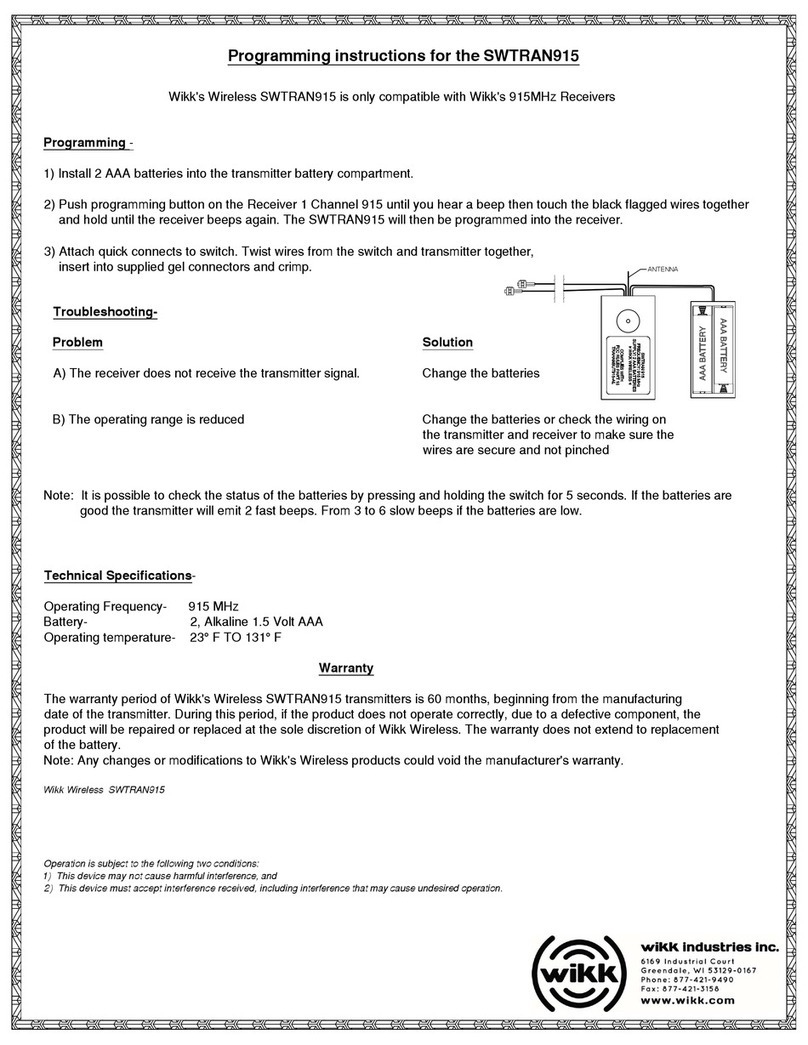
Wikk Wireless
Wikk Wireless SWTRAN915 Programming instructions
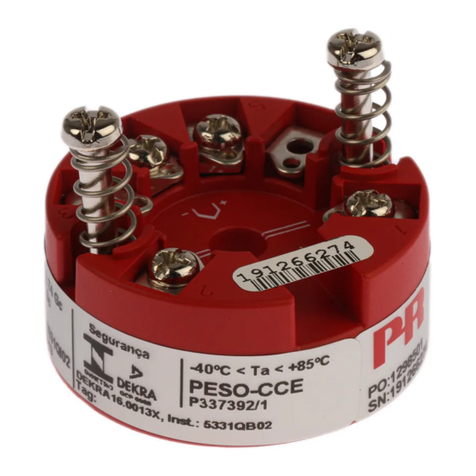
PR electronics
PR electronics PRetop 5334 manual
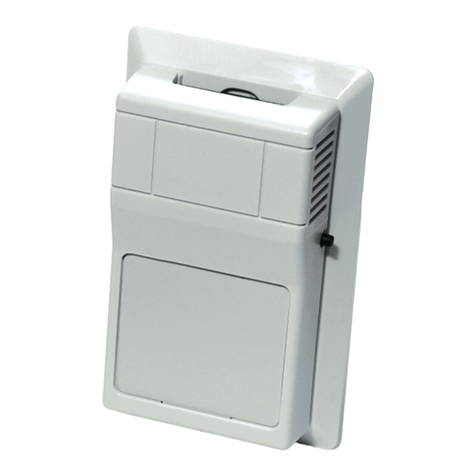
aci
aci Room Series Installation & operation instructions

Emerson
Emerson Rosemount 2051 Wireless Series Reference manual
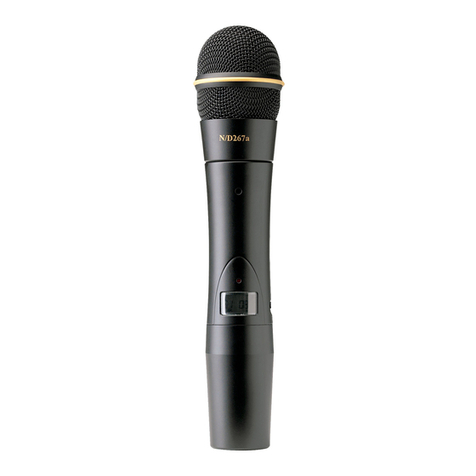
Electro-Voice
Electro-Voice HTU-2 user manual

Vega
Vega VEGABAR 83 operating instructions
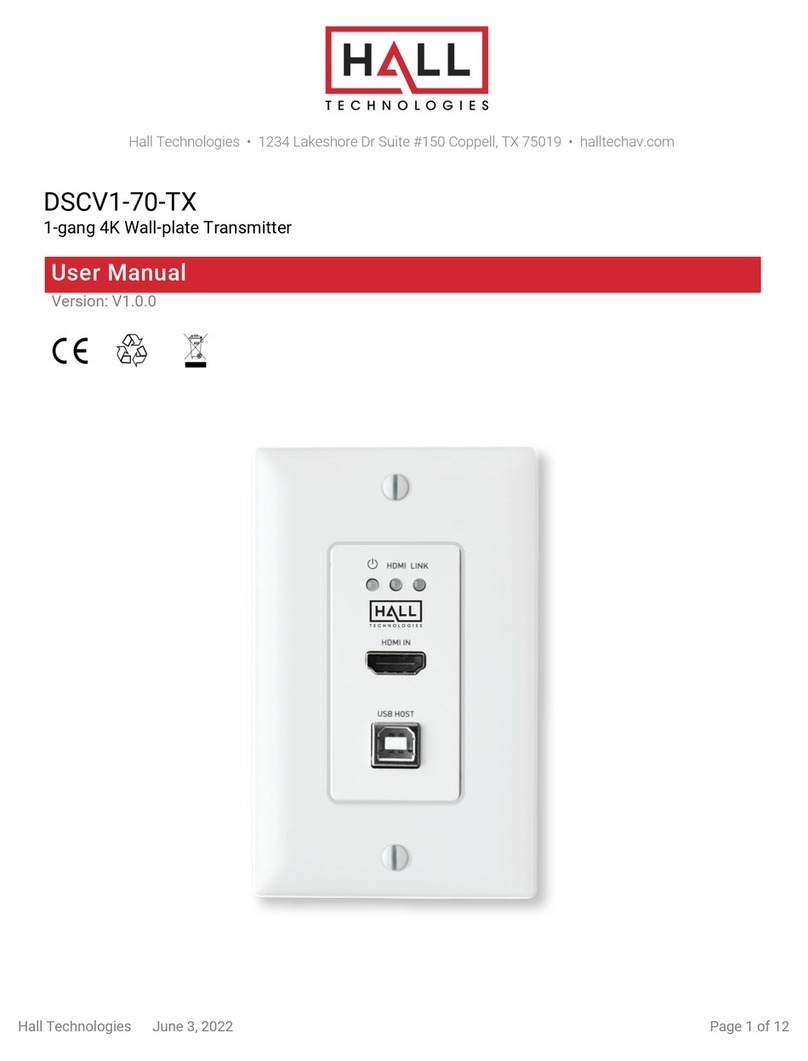
Hall Technologies
Hall Technologies DSCV1-70-TX user manual
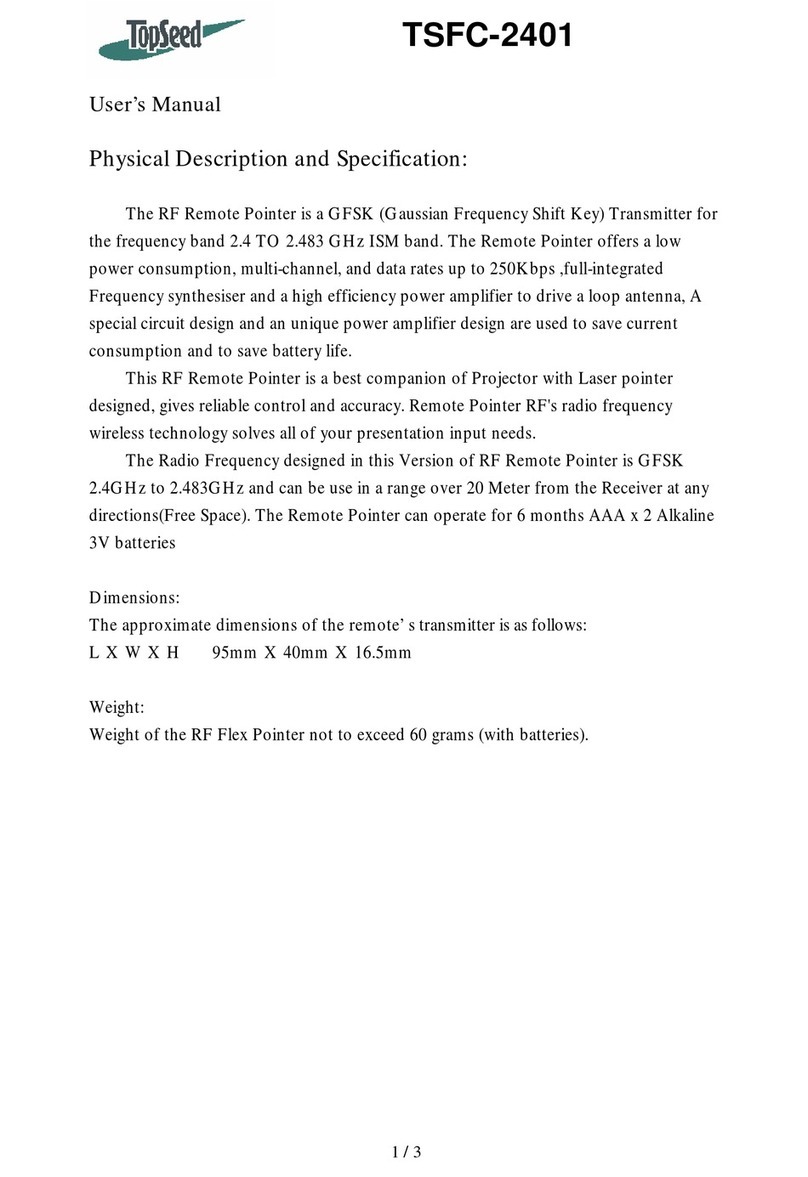
Topseed
Topseed TSFC-2401 user manual
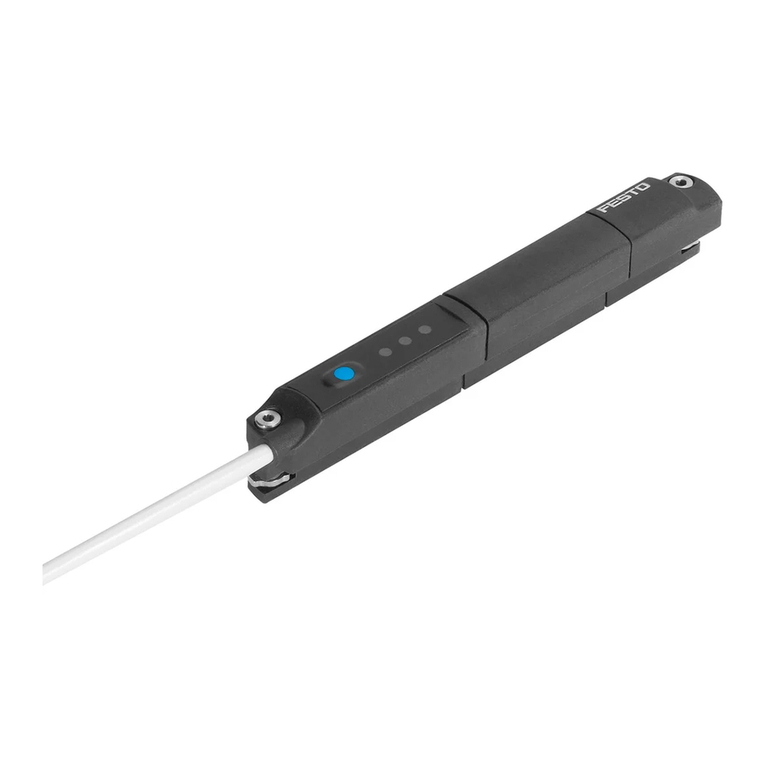
Festo
Festo SDAT-MHS operating instructions
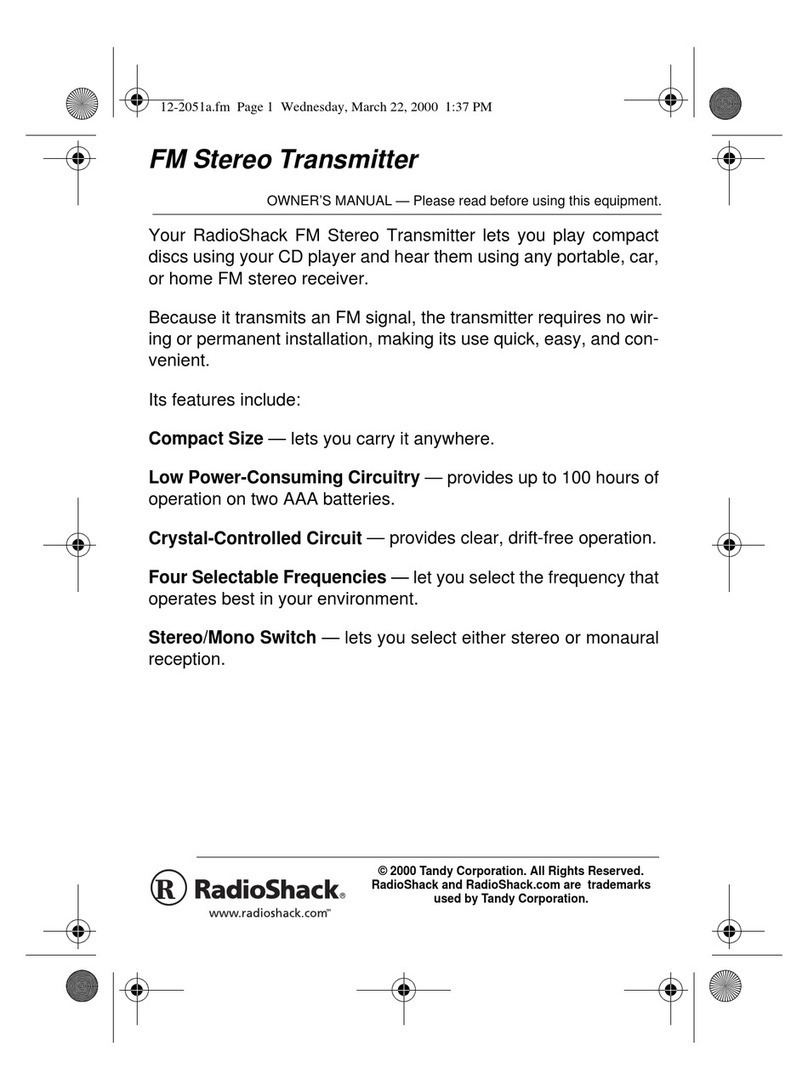
Radio Shack
Radio Shack Six-Element Triple-Drive FM Antenna owner's manual
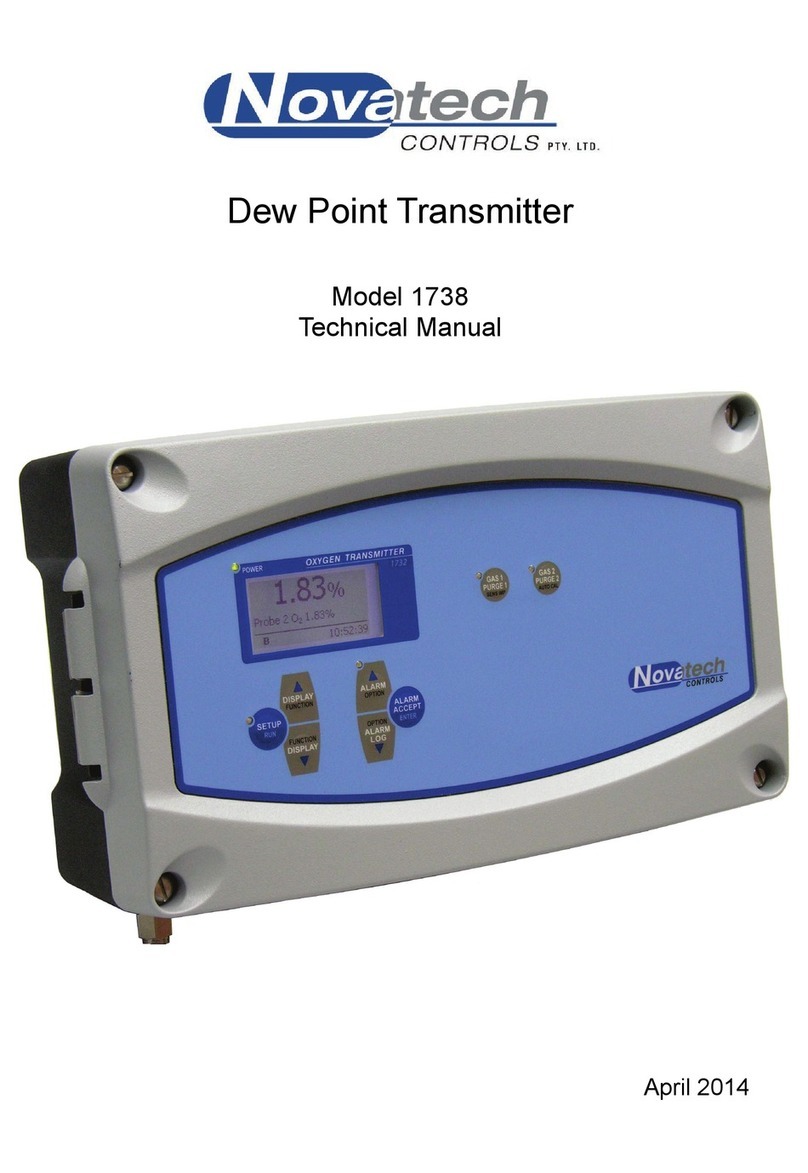
Novatech CONTROLS
Novatech CONTROLS 1738 Technical manual

Varec
Varec 7532 Installation and operation manual



